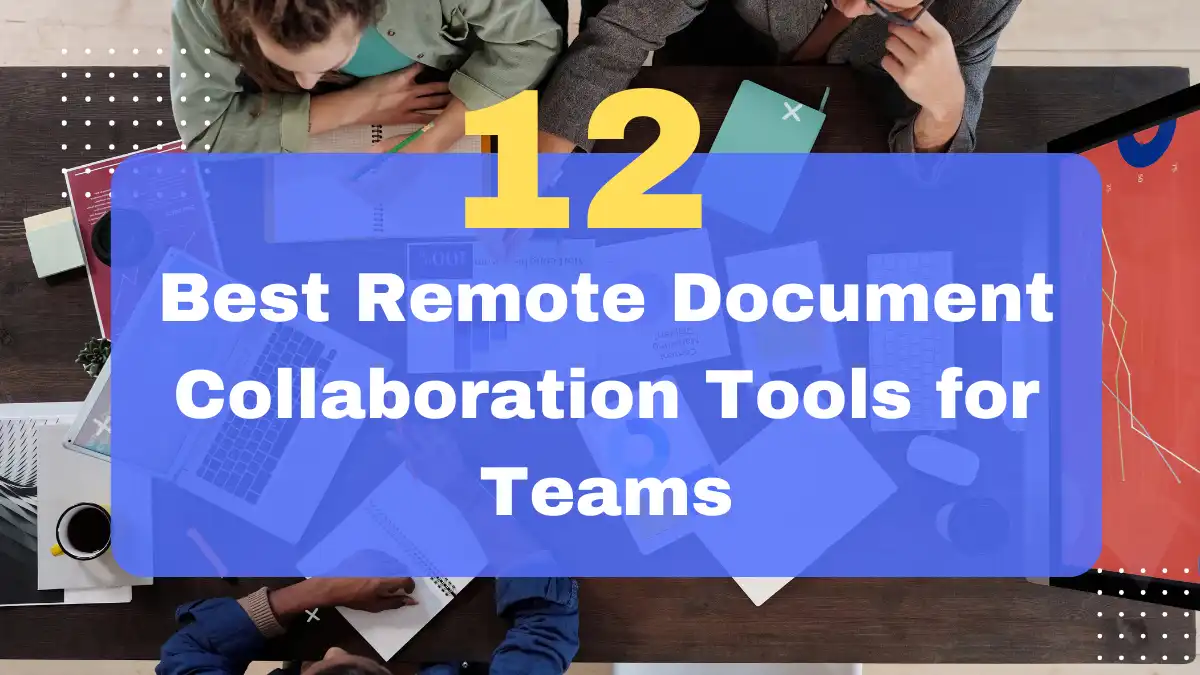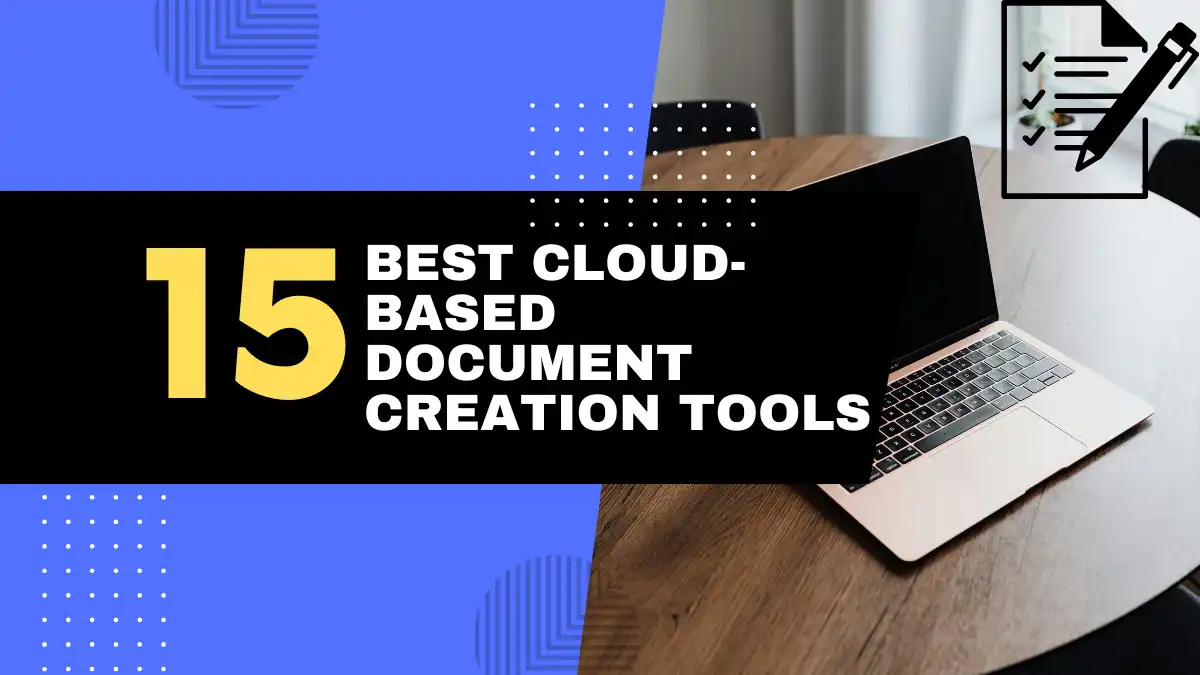
The Necessity of Document Collaboration for Remote Teams
“I can’t find the latest version!” “Wait, who made these changes?” “Which feedback should I implement first?” Sound familiar? If you’re managing or working in a remote team, these frustrations with document collaboration likely hit close to home. The chaos of hunting through email threads for attachments, the confusion when multiple versions circulate simultaneously, and the delays waiting for feedback from colleagues in different time zones—these challenges can transform simple document work into productivity nightmares.
Remote team document collaboration represents one of the most critical yet challenging aspects of distributed work. When your team can’t gather around a conference table to review a proposal or huddle at a colleague’s desk to co-edit a report, the seamless document workflows you once took for granted become surprisingly complex hurdles to overcome.
In 2025, with 78% of companies worldwide now embracing hybrid or fully remote models, mastering remote document collaboration isn’t optional—it’s essential for survival. Teams that excel at online collaborative document editing report 34% higher productivity and 47% faster project completion times compared to those struggling with fragmented approaches.
Team document sharing in a remote context goes beyond simply exchanging files. It encompasses real-time editing, asynchronous feedback, version control, and maintaining a single source of truth—all while navigating the complexities of distance, time differences, and diverse technology setups.
This comprehensive guide aims to equip your remote team with proven strategies, tool recommendations, and best practices to master document collaboration in the distributed work era. Whether you’re leading a newly remote team or looking to optimize existing collaboration processes, you’ll discover actionable insights to transform how your team works together on documents.
Understanding the Landscape of Remote Document Collaboration
What is Remote Document Collaboration?
Remote document collaboration refers to the process by which geographically dispersed team members collectively create, edit, comment on, and finalize documents using cloud-based tools and platforms. Unlike traditional office collaboration—where teams might gather in a conference room with printed drafts or huddle around a single computer—remote document collaboration relies entirely on digital platforms designed for distributed teamwork.
The fundamental difference between in-office and remote document collaboration lies in synchronicity and visibility. In an office, collaboration often happens in real-time with immediate feedback and clear awareness of who’s working on what. Remote teams, however, must navigate both synchronous collaboration (working simultaneously on documents) and asynchronous workflows (contributing at different times based on varying schedules and time zones).
At the center of effective remote team document collaboration is the online collaborative document editor—software specifically designed to enable multiple users to work on the same document simultaneously or sequentially, with changes tracked, conflicts managed, and communication integrated directly into the workflow.
| Aspect | Traditional Office Collaboration | Remote Document Collaboration |
|---|---|---|
| Location | Physical proximity required | Location-independent |
| Timing | Primarily synchronous | Both synchronous and asynchronous |
| Communication | Verbal + written | Primarily written + video calls |
| Visibility | Physical awareness of activities | Digital indicators and notifications |
| Tool dependency | Lower (can use physical documents) | Higher (entirely digital) |
| Version control | Often manual | Automated through platforms |
Why Effective Document Collaboration is Crucial for Remote Teams
Maintaining Productivity and Workflow Continuity
Without streamlined document collaboration, remote teams face significant productivity hurdles. A 2024 survey by Remote Work Institute revealed that teams with optimized document collaboration processes complete projects 34% faster than those relying on email attachments and manual version tracking.
When documents become bottlenecks, entire workflows grind to a halt. Imagine waiting for feedback on a critical proposal while a colleague in another time zone sleeps, or discovering that multiple team members have created conflicting versions of the same report. Effective remote document collaboration eliminates these roadblocks by creating clear pathways for document progression regardless of team members’ locations or working hours.
Enhancing Communication and Reducing Miscommunication
Documents often serve as the primary communication medium for remote teams. When in-person conversations are replaced by written content, clarity becomes paramount. Research from Stanford’s Virtual Teams Research Center shows that poorly managed document collaboration accounts for approximately 27% of miscommunications in remote teams.
Effective document collaboration platforms integrate communication directly into the workflow through comments, suggestions, and in-document chats. This contextual communication significantly reduces misunderstandings by keeping conversations tied directly to the relevant content.
Ensuring Version Control and Avoiding Chaos
Version control nightmares are among the most common productivity killers for remote teams. Without proper team document sharing protocols, employees waste an average of 5.3 hours weekly searching for the correct version of documents or reconciling changes from multiple sources.
Modern collaborative platforms solve this by maintaining a single source of truth with comprehensive version history. This ensures everyone always works from the current version while maintaining the ability to reference or restore previous iterations when needed.
Fostering Team Cohesion and Transparency
Perhaps surprisingly, document collaboration significantly impacts team culture and cohesion. When remote teams collaborate effectively on documents, they build shared understanding and mutual accountability that transcends physical distance.
A 2025 study by the Digital Workplace Coalition found that remote teams with transparent document collaboration practices reported 41% higher trust levels and 38% stronger team identity compared to those with fragmented or opaque document management.
Key Strategies for Effective Remote Team Document Collaboration
Choosing the Right Online Collaborative Document Editor
1. Essential Features to Look For in a Tool:
The foundation of effective remote team document collaboration is selecting the right platform. When evaluating online collaborative document editors, prioritize these critical features:
| Feature | Why It Matters | Look For |
|---|---|---|
| Real-time co-editing | Allows multiple team members to work simultaneously | Visual indicators of who’s editing what; smooth synchronization |
| Version history | Maintains record of all changes and previous versions | Ability to name versions, compare changes, and restore previous states |
| Access controls | Ensures appropriate permissions for different team members | Granular permission settings; view-only, comment-only, and edit access options |
| Integration capabilities | Connects with your existing toolstack | Native connections to your communication, project management, and storage tools |
| Cross-platform accessibility | Ensures all team members can access regardless of device | Web-based interface with mobile apps; offline capabilities |
| Commenting and feedback tools | Facilitates review processes | Threaded comments; ability to mark comments as resolved |
| Security features | Protects sensitive information | End-to-end encryption; compliance certifications relevant to your industry |
2. Popular Online Collaborative Document Editors Compared:
Google Docs
Google Docs remains the benchmark for simplicity and accessibility in collaborative editing. Its strengths include intuitive real-time collaboration, excellent change tracking, and seamless integration with the Google Workspace ecosystem.
Best for: Teams prioritizing ease of use and team document sharing Limitations: Less robust for complex formatting; limited offline capabilities
Microsoft Word Online
Microsoft 365 offers powerful collaboration through Word Online and its desktop application. Its primary advantages include superior formatting capabilities, robust reviewing tools, and seamless transitions between online and offline work.
Best for: Organizations already embedded in the Microsoft ecosystem; teams working with complex document formats Limitations: Real-time co-editing can be less smooth than Google’s; steeper learning curve
Dropbox Paper
Dropbox Paper takes a minimalist approach to document collaboration with clean design and excellent multimedia support. It excels at creative workflows and brainstorming sessions with strong integration with Dropbox’s storage solutions.
Best for: Creative teams; projects involving multiple media types Limitations: More limited formatting options; less suitable for formal business documents
Notion
Notion combines document collaboration with database capabilities, creating flexible workspaces that adapt to various team needs. Its block-based approach allows for creative document structures and integrated project management.
Best for: Teams wanting to combine documentation, task management, and knowledge bases Limitations: Can become complex for new users; real-time collaboration not as robust as dedicated document tools
Other Remote Document Collaboration Tools
- Zoho Writer: Strong business features with excellent Zoho ecosystem integration
- Coda: Combines documents with spreadsheet-like capabilities and automations
- Confluence: Excels for technical documentation and knowledge management
- Quip: Strong communication features with integrated chat
- Box Notes: Enterprise-grade security with simplified editing interface
📊 Tool Adoption Rates (2025): According to a global survey of remote teams, Google Docs leads with 47% market share, followed by Microsoft Word Online (32%), Notion (11%), Dropbox Paper (6%), and others (4%).
Establishing Clear Guidelines and Protocols for Team Document Sharing
3. Defining Document Ownership and Access Rights
Clear ownership and access structures prevent confusion and security issues in remote document collaboration. Implement these best practices:
- Designate document owners for each document type or project. The owner maintains ultimate responsibility for the document’s accuracy, quality, and security.
- Create a tiered access system that defines who can:
- View only (for sensitive information or finalized documents)
- Comment (for reviewers and stakeholders)
- Edit (for active collaborators)
- Manage access (typically limited to document owners)
- Document your access policies clearly in your team handbook, including:
- Who determines access levels for different document types
- Processes for requesting elevated access
- Regular access audits schedule
- Offboarding procedures to remove access when team members leave
- Consider implementing access groups rather than individual-based permissions to simplify management as teams change.
4. Setting Up Version Control and Naming Conventions
Consistent version control and naming conventions dramatically improve document findability and reduce confusion in remote team document collaboration:
Document Naming Convention Examples:
- Project-based:
[ProjectCode]_[DocumentType]_[Version](Example:PRJ001_Proposal_v2.3) - Department-based:
[Department]_[DocumentType]_[Date]_[Version](Example:Marketing_CampaignBrief_2025-03-15_v1) - Client-based:
[ClientName]_[ProjectPhase]_[DocumentType]_[Version](Example:Acme_Discovery_Requirements_v1.2)
Version Control Best Practices:
- Use decimal versioning (v1.0, v1.1, v2.0) where whole numbers represent major revisions and decimals represent minor updates
- Implement automatic version saving at regular intervals (most online collaborative document editors offer this)
- Train team members to add descriptive version comments when making significant changes
- Establish clear markers for document status (Draft, In Review, Approved, Final)
📋 Pro Tip: Create a template document with standardized headers, footers, and metadata fields that automatically include version information and last-edited dates.
🔍 Statistical Insight: According to a 2025 study by Workstream Analytics, remote teams that implement structured naming conventions and version control protocols spend 68% less time searching for documents and experience 76% fewer instances of duplicate work.
5. Communication Norms Around Document Editing and Feedback
Establish clear guidelines for how team members should interact within documents during remote document collaboration:
- Comment vs. Edit Protocols:
- When to edit directly vs. when to suggest changes or comment
- How to use different comment types (questions, suggestions, approvals)
- Expected response times for comments and @mentions
- Feedback Guidelines:
- Be specific and actionable in comments
- Reference relevant materials or reasoning when suggesting changes
- Use a consistent system for prioritizing feedback (e.g., “Must fix” vs. “Consider”)
- Notification Management:
- Which document activities warrant team notifications
- How to adjust notification settings to prevent overwhelm
- Alternative communication channels for urgent document-related matters
- Decision Documentation:
- How to mark when feedback has been addressed
- Where to document important decisions about document content
- Process for resolving conflicting feedback
💡 Real-World Example: Creative agency Designflow reduced document revision cycles by 40% after implementing a color-coded feedback system in their team document sharing workflow: red comments for critical changes, yellow for improvements, and green for positive feedback.
6. Training and Onboarding for Document Collaboration Tools
Even the best remote document collaboration system fails if team members don’t know how to use it effectively:
- Create tiered training materials:
- Quick-start guides for essential functions
- Comprehensive tutorials for power users
- Role-specific training for specialized needs
- Develop a buddy system where experienced users support newcomers during their first weeks.
- Schedule regular skill-building sessions to introduce advanced features and reinforce best practices.
- Use screen recordings to create a library of how-to videos specific to your team’s document workflows.
- Implement a questions channel in your team communication platform where users can quickly get help with document collaboration challenges.
👩💻 Training ROI: Research by the Digital Workplace Institute shows that teams investing in proper online collaborative document editor training see 64% higher adoption rates and 47% fewer workflow disruptions compared to those providing minimal guidance. For a typical 50-person team, this translates to approximately 230 hours of saved productivity per month.
Optimizing Workflows for Remote Document Collaboration
7. Centralized Document Storage and Organization
A logical, accessible document structure is fundamental to remote team document sharing:
- Implement a cloud-based document hub that serves as the single source of truth for all team documents. Options include:
- Google Drive for Google Workspace users
- SharePoint/OneDrive for Microsoft 365 organizations
- Dropbox Business for teams using Dropbox Paper
- Specialized knowledge management systems like Notion or Confluence
- Create a clear folder hierarchy that balances depth (nested folders) with breadth (many top-level categories).
- Develop consistent metadata tagging for enhanced searchability. Key metadata might include:
- Document type/category
- Project association
- Creation/modification dates
- Status/stage
- Department or team ownership
- Establish archiving protocols for outdated or completed project documents to prevent clutter while maintaining records.
8. Utilizing Templates and Standardized Formats
Templates dramatically improve consistency and efficiency in remote document collaboration:
- Develop core templates for frequently created document types:
- Project briefs
- Meeting notes
- Reports and analyses
- Client deliverables
- Team communications
- Include smart elements in templates:
- Auto-updating fields for dates and version numbers
- Pre-built formatting with consistent styles
- Embedded guidance text for different sections
- Links to relevant resources or examples
- Create template libraries with clear categories and usage guidance to help team members select the appropriate starting point for new documents.
- Assign template owners responsible for maintaining and improving template designs based on team feedback.
🚀 Efficiency Impact: According to a 2025 study in the Journal of Remote Work Management, teams using standardized templates in their online collaborative document editors report 58% faster document creation and 72% higher format consistency compared to those working from scratch each time. This translates to approximately 3.7 hours saved per employee per week for document-heavy roles.
9. Regular Document Reviews and Audits
Prevent document sprawl and outdated information through systematic reviews of your remote team document collaboration system:
- Schedule quarterly content audits to identify:
- Outdated information needing updates
- Duplicate documents to consolidate
- Unused documents to archive
- Access permissions to adjust
- Implement sunset dates for certain document types, triggering automatic review reminders.
- Assign document stewards responsible for maintaining accuracy in specific knowledge areas.
- Track document usage metrics to identify highly referenced resources that warrant priority maintenance.
- Create clear update logs at the beginning or end of living documents to track major revisions.
📈 Document Management Metrics: The average remote team manages 1,250+ documents across their collaboration platforms. Without regular audits, approximately 31% of these become outdated or redundant within six months, creating confusion and reducing team efficiency.
Document approval methods:
- Use built-in approval features when available
- Create standardized approval sections in documents
- Integrate with project management tools for trackable signoffs
- Build in reflection opportunities to continuously improve review processes based on team experience.
Overcoming Common Challenges in Remote Document Collaboration
Addressing Time Zone Differences and Asynchronous Collaboration
Time zone disparity ranks among the top challenges for global remote teams. These strategies help bridge the temporal divide:
- Implement “follow-the-sun” workflows where documents progress through different regional teams across time zones.
- Create clear handoff protocols for documents transitioning between team members in different time zones:
- End-of-day status updates highlighting completed work and outstanding issues
- Clear flagging of sections needing attention
- Recorded video walkthroughs of complex changes or questions
- Establish core collaboration hours when teams in different time zones can overlap for real-time document work.
- Leverage asynchronous collaboration features:
- Robust commenting that doesn’t require real-time presence
- Assigned tasks with clear deadlines
- Status indicators showing document progress
- Use automation to bridge time gaps:
- Scheduled document review reminders
- Automated status updates
- Notification digests aligned with working hours
⏰ Time Zone Management Tip: Use world clock features in calendar apps when scheduling document collaboration sessions and set clear expectations about response times during non-overlapping hours.
Maintaining Security and Data Privacy in Online Document Sharing
Remote document collaboration introduces unique security considerations:
- Implement comprehensive security protocols:
- Multi-factor authentication for document access
- End-to-end encryption for sensitive content
- IP restrictions where appropriate
- Automatic timeout for inactive sessions
- Create tiered security classifications for different document types:
- Public (shareable without restrictions)
- Internal (organization-wide access)
- Confidential (limited team access)
- Restricted (minimal access with additional verification)
- Develop clear policies for:
- External sharing limitations
- Mobile device access requirements
- Personal device security standards
- Public WiFi usage guidelines
- Conduct regular security training focused specifically on document collaboration risks:
- Phishing awareness
- Secure link sharing
- Permission management
- Physical security for remote workspaces
According to cybersecurity firm CyberEdge Group, document sharing platforms are involved in 24% of data breaches affecting remote teams—making security protocols essential rather than optional.
Ensuring Consistent Access and Reliable Technology
Technical disparities can significantly impact remote document collaboration:
- Establish minimum technical requirements for effective participation:
- Internet speed thresholds
- Compatible browsers and devices
- Required software versions
- Storage allocations
- Create contingency protocols for technical disruptions:
- Offline work procedures
- Alternative communication channels
- Backup collaboration methods
- Emergency contact processes
- Provide technology stipends or equipment to ensure consistent capabilities across the team.
- Develop lightweight alternatives for team members experiencing bandwidth limitations:
- Text-only document versions
- Progressive loading options
- Mobile-optimized interfaces
- Schedule regular tech maintenance to prevent preventable disruptions:
- Software updates
- Storage cleanup
- Performance optimization
- Connectivity testing
Fostering a Collaborative Culture Remotely
Technology alone doesn’t create collaboration—culture does:
- Model collaborative behaviors at leadership levels:
- Transparent document creation
- Active participation in feedback processes
- Recognition of collaborative contributions
- Create opportunities for synchronous collaboration:
- Document co-creation sessions
- Virtual “office hours” for document support
- Collaborative editing sprints for major documents
- Celebrate collaboration wins:
- Highlight examples of effective team document efforts
- Recognize individuals who excel at constructive feedback
- Share stories of how collaboration improved outcomes
- Build in structured relationship development:
- Rotating document review pairs
- Cross-functional collaboration initiatives
- Peer teaching of document collaboration techniques
- Foster psychological safety around document collaboration:
- Normalize revision as improvement, not criticism
- Create safe spaces for asking questions
- Develop healthy conflict resolution processes for content disagreements
Companies scoring in the top quartile of collaborative culture metrics report 33% higher employee retention and 29% higher productivity among remote teams, according to workforce analytics firm Lattice.
Conclusion: Empowering Your Remote Team with Effective Document Collaboration
In today’s distributed work environment, mastering remote team document collaboration isn’t just about productivity—it’s about unlocking your team’s full potential regardless of physical location. The barriers of distance dissolve when teams can seamlessly create, share, refine, and finalize documents together using the right online collaborative document editors and workflows.
The 15 essential strategies outlined in this guide—from selecting the right remote document collaboration tools to establishing clear team document sharing protocols, addressing common challenges, and nurturing a collaborative culture—form a comprehensive framework for excellence in distributed teamwork.
Remember that successful implementation requires intentionality. Remote collaboration doesn’t happen automatically; it must be deliberately designed, consistently reinforced, and regularly refined based on your team’s evolving needs. According to a 2025 State of Remote Work study, teams that establish formal document collaboration processes outperform those with ad-hoc approaches by 42% in key productivity metrics.
✨ Key Takeaway: By investing in optimized document collaboration processes now, you position your organization to thrive in the increasingly distributed future of work—where the best ideas emerge not from individual brilliance but from the collective intelligence of teams collaborating effectively across boundaries.
Start with one area of improvement, measure its impact, and build from there. Your team’s remote document collaboration journey is iterative, but each step forward creates exponential benefits in productivity, communication clarity, and team cohesion.
FAQ – Frequently Asked Questions About Remote Team Document Collaboration
What are the biggest challenges in remote document collaboration?
The primary challenges include managing time zone differences for global teams, ensuring consistent document access across varying internet connections, maintaining security and privacy standards, preventing version control confusion, and fostering the collaborative culture that occurs naturally in physical workspaces. Technical issues are often easier to solve than the human factors—building trust, encouraging participation, and creating shared ownership of documents in a distributed environment.
How do I choose the best online collaborative document editor for my remote team?
Start by assessing your team’s specific needs: document complexity, collaboration patterns (real-time vs. asynchronous), integration requirements with existing tools, security standards, and technical capabilities across team members. Consider your team size and composition—larger or more technically diverse teams may benefit from simpler, more intuitive interfaces. Test potential platforms with a pilot group before full deployment, focusing on user experience and adoption likelihood rather than just feature lists.
What are some tips for effective team document sharing?
Establish clear naming conventions and folder structures from the outset. Create detailed but simple guidelines for document creation, editing, and review processes. Use templates to standardize formats and ensure consistency. Implement permission structures that balance security with accessibility. Develop explicit communication norms around document changes and feedback. Schedule regular clean-up sessions to prevent document sprawl. Most importantly, model best practices at leadership levels consistently.
How can we ensure security when collaborating on documents remotely?
Implement a multi-layered security approach: use collaborative platforms with strong encryption and compliance certifications; establish clear access controls based on need-to-know principles; require multi-factor authentication for sensitive documents; create explicit policies for external sharing and mobile access; conduct regular security audits; and provide ongoing training on security best practices. Many security breaches occur through user error rather than technical vulnerabilities, so awareness training is as important as technical safeguards.
Can remote document collaboration really improve team productivity?
Absolutely. When implemented effectively, remote document collaboration eliminates numerous productivity barriers: the delays of sequential editing, the confusion of multiple document versions, the inefficiency of scattered feedback, and the limitations of location-dependent work. Research consistently shows that well-designed collaborative systems reduce document completion time by 30-50% while improving quality through diverse input. The key is implementing systems that enhance rather than complicate the natural workflow.
What if my team members have different levels of tech proficiency?
This common challenge requires a tiered approach. Start by selecting tools with intuitive interfaces and minimal learning curves for basic functions. Create differentiated training resources—from quick-start guides to comprehensive tutorials—that address various learning styles and proficiency levels. Establish a buddy system pairing tech-savvy team members with those needing more support. Schedule regular skill-building sessions focused on practical application rather than abstract features. Finally, maintain an active help channel where team members can ask questions without judgment.
Looking for more document collaboration tools? Check out our related guides on The Ultimate Guide to Collaborative Document Tools: Software, Features, and Best Practices.






